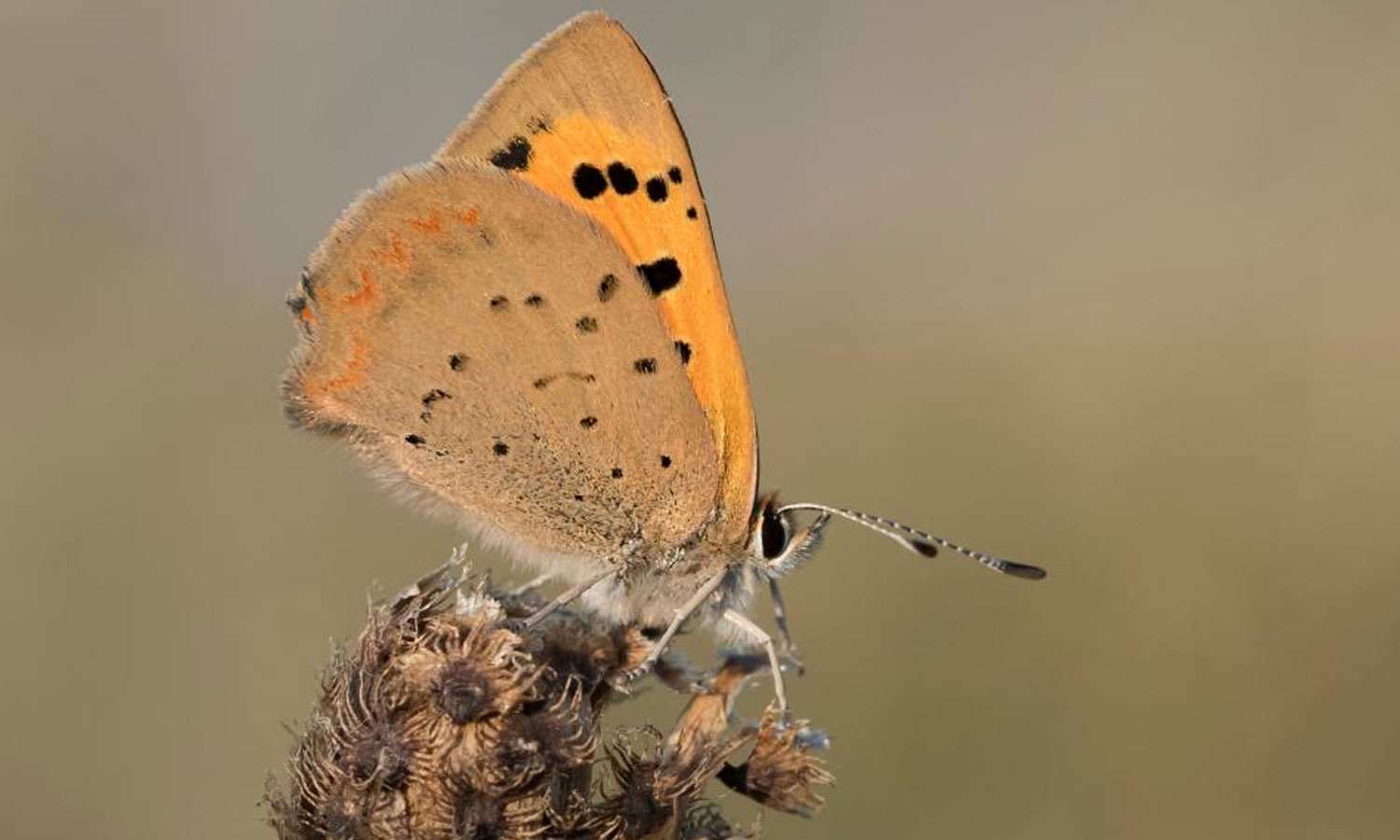Kate Bradbury is a gardening expert and has authored a number of books including The Wildlife Gardener, as well as appearing on the BBC’s Springwatch. Here, in an article written for Butterfly in Spring 2020, Kate gives her tips for creating a wildlife garden of your own.
Last year I transformed my small, urban plot into a thriving wildlife garden, which hopefully inspired many others with its appearances on Springwatch, Gardeners’ World and Autumnwatch. By adding a pond and wildflower meadow, planting native shrubs and trees, and including a huge pollinator border, I enticed many wild creatures to visit, breed and feed in my compact urban space.
I was thrilled to attract seven butterfly species – Small Copper, Small and Large Whites, Speckled Wood, Painted Lady and Red Admiral – not the best count, but a baseline from which I hope to improve every year. My moth trap lured some of my favourite species to the garden, and my pollinator border and wildflower meadow buzzed with all manner of moths, bees, flies and beetles.
I watched House Sparrows take seed from the meadow grass, while Goldfinches feasted on Greater Knapweed seed. I had hedgehogs and foxes visiting at night, and even a Slow-worm basking beneath my ‘reptile tin’ (a sheet of old metal). Winter brought new birds to the garden and I can’t wait to see what spring brings – nesting birds? Egg-laying Orange-tip butterflies? Frogspawn? I’m fizzing with excitement.
With all this going on, you’d be forgiven for thinking I had a big garden in the countryside. But it’s just 40 feet long and one block from the high street. My bird and butterfly counts might not be as impressive as those in more rural areas, but I’ve created breeding opportunities for a variety of species that might now have a better corridor from one larger habitat to another.
While many of us use our weekends to spend time out ‘in nature’, it’s our gardens that bring nature to us on a daily basis. You don’t have to dig a pond and plant a wildflower meadow, as I did. Simply by planting nectar- and pollen-rich flowers and adding caterpillar foodplants such as Alder Buckthorn, Hawthorn, Hazel, Silver Birch, Cuckooflower, Nettle and Hops, while allowing a patch of grass to grow long, you can bring more nature to your doorstep while helping declining species.
I’ve lived in my house just over a year, so the garden is still ‘new’. But knowing that wildlife can find food and make a home here is one of my proudest achievements, and having these species around me makes me incredibly happy. No matter how big or small your space, there’s so much you can do for nature.
Kate's top tips
- Think small. You don’t need lots of space to encourage nature: think of your garden as a corridor from one habitat to another.
- Substance over style. When planting always choose native nectar- and pollen-rich flowers, and sow a patch of native wildflower seeds.
- Don’t forget caterpillars. Remember to add a variety of caterpillar foodplants to the garden, like native shrubs.
- Survey your new wildlife kingdom. Please do spend time in your newly wilded garden, enjoying the wildlife and de-stressing.


